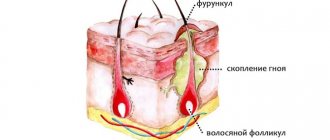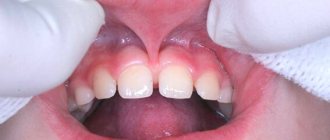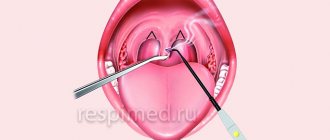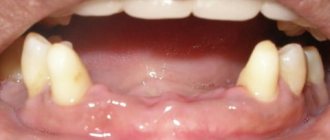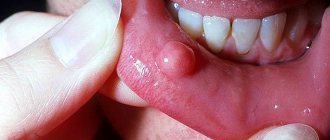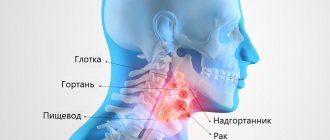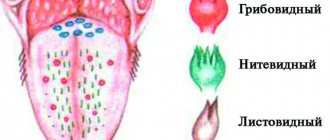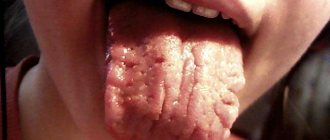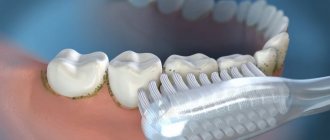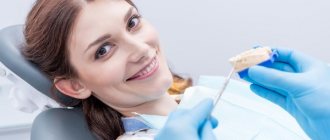All caring parents carefully monitor the health of their baby, so any irritation on the child’s face or body can cause severe anxiety. A callus on the lip of a newborn is an unpleasant, but not dangerous, phenomenon. Knowing what factors lead to injury to delicate skin, you can minimize the risk of formation.
Varieties and causes of occurrence
A callus on the upper lip of a baby is a patch of keratinized skin that appears due to strong friction. This is how the body protects the deep layers of the epidermis from damage.
There are several types of formations:
- dry - a hard crust consisting of dead particles of the epidermis;
- wet - under the rubbed layer of skin there is a bubble filled with lymphatic fluid;
- bloody - there is an admixture of blood in the fluid of the callus.
Dry calluses can most often be seen on the lips of infants. Delicate skin is damaged due to the following factors:
- rough tip of the nipple during artificial feeding;
- long and frequent friction on the nipple in the absence of a feeding regimen;
- improper latching of the breast by the child;
- features of the anatomical structure of the mammary gland;
- difficulty releasing milk.
Usually, a milk callus on a baby’s lip appears 2-3 weeks after the birth of the child and does not bring him significant discomfort. If the skin has become rough as a result of active sucking, such a neoplasm does not require special treatment. After a few days, the hardened crust will fall off, leaving no scars. In some cases, the skin finally heals only after the introduction of complementary foods, when the pressure on the lip is reduced.
Regardless of the reason that caused the appearance of a callus, it is forbidden to rip it off or pierce it . Such actions can lead to the entry of pathogenic bacteria into the wound. It is also not recommended to lubricate the formation with alcohol-based antiseptics, including iodine and brilliant green. The use of various traditional medicines can cause an acute allergic reaction, including suffocation.
If the blister opens on its own or is accidentally touched while swimming, it is necessary to lubricate the damaged area with hydrogen peroxide, Miramistin or an aqueous solution of Chlorhexidine. After this, the wound will dry out within 2 hours.
Cleft lip and palate are no longer a death sentence
Simply put, this anatomical defect, due to its similarity with the structure of the corresponding organs in the hare and wolf, is strictly designated as “cleft lip” and “cleft palate.” In medicine it is called cleft lip and palate. Even in the middle of the last century, such a purely external disorder represented an almost insurmountable barrier to the normal development of a child, including speech. Now such problems have already been solved. The main thing is to seek help from the appropriate specialists as early as possible.
FROM THE FIRST DAYS OF LIFE
As a rule, the expectant mother learns that a child will be born with a cleft lip and palate at 16-20 weeks of pregnancy during a screening ultrasound. Heredity affects only 15-20% of cases. The rest is due to infectious diseases, stress and toxicosis that the woman suffered in the first two months of pregnancy, when the maxillofacial skeleton is formed. It is useless to look for reasons and those to blame. It is better to immediately contact pediatric maxillofacial surgeons, send pictures and ultrasound results by email, and keep in touch with specialists by sending pictures of the next ultrasound scans.
The baby, if there are no other problems, will be born in a regular maternity hospital. You need to take a photo of what the defect looks like and send it to the doctor. In the vast majority of cases, the operation is performed when the child is 2-4 months old. Mother and child face a difficult period: due to an anatomical defect, the newborn does not eat well, cannot swallow and suck fully, in order to feed him, he has to use special bottles and nipples.
Breastfeeding is difficult to maintain under such conditions.
But, if surgery takes place within the first month of life, many problems can be avoided. True, this requires specialists who are familiar with the technique of operations on newborns and the appropriate equipment. In the Moscow Children's City Hospital No. 9 named after G.N. Speransky, all conditions came together in 2011. And for the eighth year now, specialists from the First Moscow State Medical University named after I.M. have been at its base. Sechenov operates on newborns with cleft lip and palate.
The youngest patient was only 3 days old. The baby can suckle at the breast the very next day after surgery. On the 6-7th day, mother and child are discharged home.
TO BE CONTINUED
Parents need to be prepared for the fact that the baby will undergo multi-stage treatment with the participation of many specialists. Neonatologists, anesthesiologists and maxillofacial surgeons prepare a newborn for surgery, and, if necessary, orthodontists. After surgery, a small scar remains. It usually takes six months to heal.
At 6-8 months, surgery to correct the palate is performed. It is important to do it before the baby begins to master the first syllables. At 2-2.5 years, if necessary, correction of the lip and nose is carried out, at 4-4.5 years, the alveolar process defect is eliminated. All this time, the child’s development is closely monitored by a pediatrician, neurologist, maxillofacial surgeon and psychologist. When the baby begins to master speech, a speech therapist is involved. An orthodontist monitors the baby's jaw development. The same specialist, if necessary, straightens the teeth, corrects the primary and then the permanent bite. If teeth need to be restored (children with cleft lip and palate sometimes have two missing upper front teeth), an orthopedic dentist is involved. In total, 10-15 specialists are involved in the treatment. Thanks to their efforts, the main problems are solved before school. In adolescence, if necessary and desired by the teenager, minor cosmetic problems remaining after operations are eliminated.
***
AN EXPERT IS HERE TO HELP YOU
Adil Mamedov
,
dentist, honored doctor of the Russian Federation, laureate of the international humanitarian award ICPF, doctor of medical sciences, professor, head. Department of Pediatric Dentistry and Orthodontics of the First Moscow State Medical University named after I.M. Sechenov
***
Operations to eliminate cleft lip and palate are carried out at the expense of the compulsory health insurance fund, that is, they are free for the baby’s parents.
For treatment in the appropriate clinic, you need to receive a referral in form 057u and pass the necessary tests.
***
A cleft lip and palate is only a physical defect. It does not affect mental health and mental abilities. Among the people born with this feature, there are famous scientists, great athletes, and famous musicians.
Source: Happy Parents
Symptoms of rashes
A milk blister on the lip of a newborn can be confused with pathological rashes that require special treatment. The formation, associated with the way the baby feeds, looks like a small white or yellowish bead, reaching 0.5 cm in diameter and located in the center of the upper lip. The edging of the affected area merges with the skin.
The inflammatory element resulting from the entry of infectious agents into the body may have a gray, yellow or white color. The baby's oral cavity should be examined. The presence of plaque, blisters or ulcers in it indicates the presence of pathogenic bacteria. You should be alert if you notice the following symptoms:
- frequent regurgitation and gagging;
- problems with stool, changes in the smell, color and consistency of stool;
- apathy, tearfulness for no reason;
- refusal of food, malnutrition;
- a repulsive odor emanates from the mouth caused by the activity of pathogenic bacteria;
- high body temperature, sweating;
- redness of the skin, appearance of a rash;
- there are similar formations on the oral mucosa;
- increased salivation.
Preventive measures
The likelihood of a callus forming on the upper lip of a newborn can be reduced by following feeding rules . You must adhere to the following recommendations:
- If the baby falls asleep while sucking, you need to take him off the breast by gently pressing his chin and put him in his crib.
- With good lactation, a feeding session should not last more than 20 minutes. To normalize milk flow, you need to drink more liquid. 10-15 minutes before feeding the baby, you should drink a glass of warm fruit compote, rosehip decoction or weak tea with milk.
- The baby should grasp not only the nipple, but also the areola with his mouth. To do this, you need to hold the baby so that his face is at the level of the breast. If the grip is incorrect, the position of the chest should be corrected.
- If there are no problems with lactation, pediatricians recommend breastfeeding babies for at least six months so that their delicate skin is not damaged. If your lips are rubbed with a pacifier, you need to make sure that its hole is not clogged with lumps of the mixture. The softest attachments are made of latex and silicone.
- With artificial feeding, the risk of overfeeding the baby is increased. It is impossible to feed a child with formula milk in unlimited quantities, not only because of the risk of callus formation, but also because the finished powder is saturated with vitamin supplements and vegetable fats, which must be supplied to the child’s body in a volume appropriate to his age and body weight.
results
In patients with RHN, elements of bulbar syndrome were most often detected, and somewhat less frequently, pseudobulbar syndrome; signs of brainstem dysfunction were common; signs of dysraphic status, including vertebral anomalies, were often detected (Table 1).
Table 1. Features of the neurological status in patients with RHN
Elements of bulbar syndrome in varying degrees of severity were found in 100% of patients with RHN and had their own characteristics. First of all, attention was drawn to disturbances in the innervation of the tongue (Fig. 1): deviation of the tongue was detected in 13 (61.9%) patients; hypotrophy of the tongue - in 18 (85.7%) patients (central - in 13 (61.9%) patients, regional - in 2 (14.3%), general - in 3 (9.5%) patients); fasciculations and motor restlessness of the tongue - in 5 (23.8%) and 4 (19.0%) patients examined with RGN, respectively.
Rice. 1. Language of a child with RGN.
Sagging of the soft palate and deviation of the uvula of the soft palate (uvula) were noted in 7 (33.3%) patients of the main group. At the same time, swallowing and the pharyngeal reflex were preserved in almost all patients. Only in 1 (4.8%) case were there minor swallowing disorders.
17 (81.0%) patients of the main group had speech disorders: isolated dysarthria - 5 (23.8%), isolated dys- and nasophonia - 3 (14.3%). Severe speech disorders in the form of a complete bulbar speech syndrome - severe dysarthria in combination with disturbances in voice sonority (naso- and dysphonia), as well as with features of the speech flow (slow, less often - 3 (14.3%) cases - scanned speech) were identified in 9 (42.9%) patients. Severe speech disorders were more often noted in younger patients - their average age was 9.9 ± 2.0 years.
Somewhat less frequently in patients with RHN, neurological symptoms were detected from other cranial nerves (III, IV, V, VI, VII pairs): facial innervation - perioral fasciculations - 6 (28.6%), hypomimia - 5 (23.8%) , “fast and furious” facial expressions - 3 (14.3%), facial asymmetry - 2 (9.5%); weakness of the masticatory muscles and/or deviation of the lower jaw were detected in 2 (9.5%); signs of dysfunction of the oculomotor nerves - strabismus and nystagmus - in 3 (14.3%) and 4 (19.0%), respectively. Several patients had sensory organ disorders: congenital hearing loss - 2 (9.5%), congenital progressive myopia - 1 (4.8%).
Disorders of facial innervation were in 2nd place in frequency of occurrence in patients with RHN after elements of bulbar syndrome: in the group as a whole, specific features of facial expressions in the form of hypomimia, less often a kind of “forced” emphasized facial expressions were identified in 7 (33.3%) patients with RGN.
Also, very often in patients with RHN, a static disorder was detected (Fig. 2), mainly from the cervicothoracic spine - 16 (61.9%) of those examined in the main group. In patients of the main group, different shoulder heights were detected - 13 (50.0%) patients, chest asymmetry with unilateral muscle wasting - 3 (14.3%), kyphoscoliosis - 12 (57.1%) patients, limited spinal mobility - 3 (14.3%) patient.
Rice. 2. Disturbance of statics (a variant of the development of the cervicothoracic spine) in a child with RHN.
Manifestations of facial dysraphism were frequent: eye difference - 11 (52.4%) patients, hypo- and hypertelorism - 7 (33.3%) patients, facial asymmetry with underdevelopment of one half of it - 7 (33.3%) patients, various height of the ears - 3 (14.3%) patients.
Thus, it is possible to create a kind of “neurological portrait” of a patient with RGN: specific elements of bulbar syndrome (mainly affecting the tongue muscle), features of facial expressions, facial and spinal (mainly from the cervicothoracic region) dysraphism. As the age of the subjects increased, the severity of dysarthria and brainstem dysfunction (from the III-VII pairs of cranial nerves) decreased, but mild speech disorders (dysphonia and/or nasophonia) persisted even in adult patients. In older patients, vertebral problems (back pain, recurrent radicular syndromes, early degenerative changes in the spine) and signs of autonomic dysfunction came to the fore. For this reason, 6 out of 10 (60%) patients with RHN over 12 years of age were observed by a neurologist.
In addition to the characteristics of cranial innervation, microfocal neurological symptoms were found in 9 (42.9%) patients with RHN. It was predominantly represented by elements of cerebellar syndrome (nystagmus, muscle hypotonia, minimal coordination disorders) - 4 (19.0%) patients, autonomic-vascular disorders in older patients - 5 (23.8%) in patients aged 15-17 years. In 2 (9.5%) elements of akinetic-rigid syndrome were identified.
It is important to note that cognitive impairment was not typical for patients in the main group: signs of mild cognitive impairment (not limiting social adaptation) were detected in only 2 (9.5%) of the examined patients with clefts.
In several patients with RGN, the examination revealed signs of a neurological disease, which required more in-depth additional examination (MRI of the brain and spine, ultrasound examination of the brachiocephalic arteries, consultation with a pediatrician and geneticist). According to such additional examination, carried out in 5 (23.8%) patients of the main group, anomalies in the development of the brain stem and posterior cranial fossa, craniovertebral junction and neural tube were identified, in 2 patients genetically determined diseases were identified: incomplete Dandy-Walker anomaly ( underdevelopment of the cerebellum, expansion of the greater and inferior cerebellar cisterns without signs of hydrocephalus) in the structure of Stickler syndrome - 1 patient; aplasia of the corpus callosum (Fig. 3) and brainstem anomaly in the structure of Mobius syndrome - 1 patient; Chiari malformation type I in combination with characteristics of the vessels of the vertebrobasilar system (kinking syndrome of the basilar artery) - 1 patient; Chiari malformation type II in combination with spina bifida
— 1 patient; 1 patient showed signs of parahypocampal sclerosis with epileptic syndrome (Table 2).
Table 2. Developmental anomalies and diseases of the nervous system in patients with RHN
Rice.
3. MRI picture of aplasia of the corpus callosum in a girl R., 12 years old, with ROP. On sagittal FSE T1WI (a, b) the corpus callosum is not differentiated; attention is drawn to the enlarged foramen of Maugendie (a) with a relatively preserved volume of the cerebellum; its tonsils are slightly lowered (b) - to the entrance to the foramen magnum. In this case, there is a slight widening of the interhemispheric fissure and a typical “butterfly” of the lateral ventricles on FSE T2WI in the coronal projection (c). On axial FSE T1WI (d) and TE2WI (e), FLAIR T2WI (f), instead of the corpus callosum, a slightly widened interhemispheric fissure is visible with a change in the configuration of the ventricles characteristic of aplasia of the corpus callosum. In the control group, signs of bulbar syndrome and disorders of facial innervation were not recorded ( p
<0.001).
Microfocal neurological symptoms of other localization (asymmetry and/or revival of tendon reflexes, mild coordination disorders) were detected significantly ( p
<0.01) less often in controls than in patients with RHN - in 3 (27.3%) of the examined patients.
Signs of spinal dysraphism (different shoulder heights, kyphoscoliosis) were detected in 6 (54.5%) patients in the control group, facial dysraphism (different palpebral fissure heights, facial asymmetry) - in 4 (36.3%), less frequently than in the main group. but without statistically significant differences with it. It is important to note that based on clinical examination, only so-called minor developmental anomalies, often detected in practically healthy people, were recorded. At the same time, relatively gross disturbances in the statics of the cervicothoracic region detected in patients with RHN (underdevelopment of one half of the chest, high grade kyphoscoliosis, fixed torticollis) were not found in the control group.
